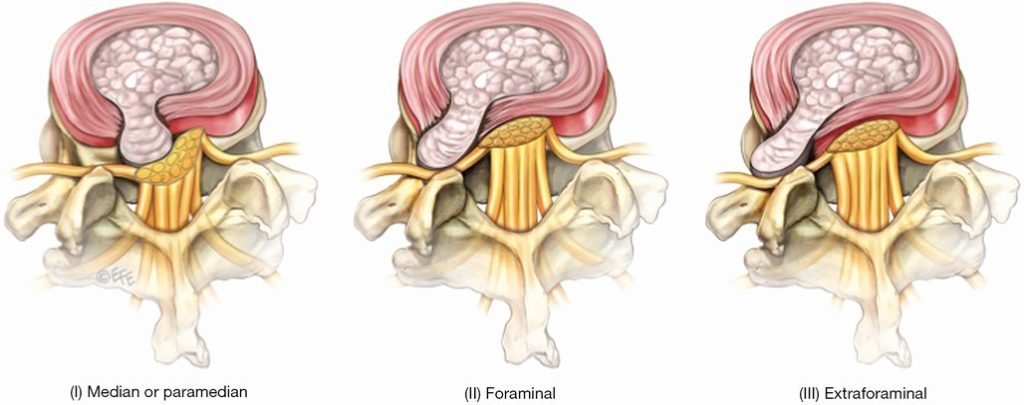A disc herniation can often be a very serious and debilitating injury.
In between each vertebrae of the spine there is a “disc” made to support the spine in each movement. These discs also provide shock absorption during physically demanding movements like running or exercising. The discs also provide the spine with flexibility and with the ability to withstand compressive forces.
The disc of the spine is made of 2 layers. The annulus fibrosus is the fibrous outer layer. It provides strength and stability to the disc while also remaining quite flexible and versatile.
The nucleus pulposus is like the jelly of a donut. It is like a squishy plasma on the inside of the disc. It helps provide cushioning and shock absorption to the spine.
Disc Injury:
When someone “throws out” their back due to an injury from poor bio-mechanics or even due to trauma such as a fall or car accident – The soft and jelly-like nucleus pulposis can be put under such pressure it will actually “slip” out of the outer ring – either partially or fully.
This is known as a slipped or bulging disc. When this happens the inner-jelly of the disc can actually press against the spinal chord or nerve roots. This causes extreme pain that can radiate down the spine into the buttock or all the way down into the feet.
Osteopathy
-Helps reduce pain and inflammation due to slipped disc.
-Stretches the ligaments and tissues of the spine to help keep optimal mobility and range of motion.
-Reduces tension on the disc and spinal chord by releasing muscle spasm and restrictions near and around the affected area.
-Some osteopathic techniques may create more space within the intervertabral foramen releasing pressure off the spinal nerves as they leave the spine.
-Osteopathic techniques increase blood and fluid circulation to the area causing increased healing and also help to flush out stagnant fluids and toxins from the area. This helps to aid a speedy recovery.
